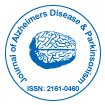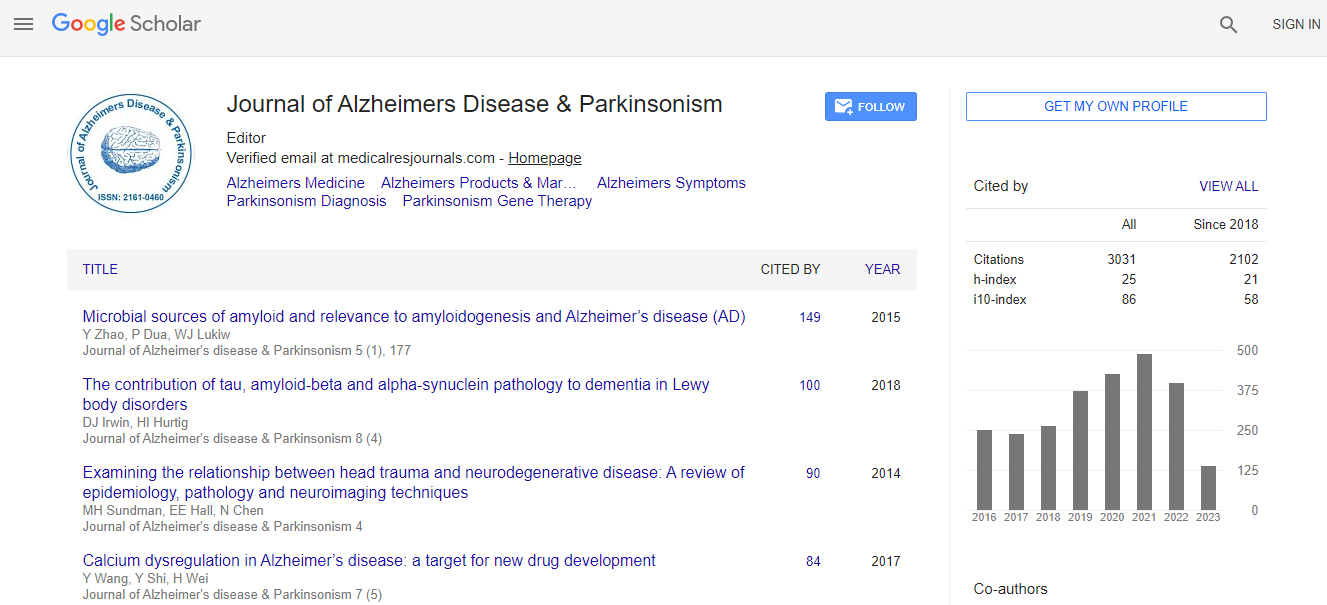Review Article
Examining the Relationship between Head Trauma and Neurodegenerative Disease: A Review of Epidemiology, Pathology and Neuroimaging Techniques
Mark H Sundman1*, Eric E Hall2 and Nan-kuei Chen1
1 Brain Imaging and Analysis Center, Duke University Medical Center, Durham, NC, USA
2 Department of Exercise Science, Elon University, Elon, NC, USA
- Corresponding Author:
- Mark H Sundman
Brain Imaging and Analysis Center
Duke University Medical Center
Durham, NC, USA
Tel: 919-684-1214
E-mail: Mark.Sundman@dm.duke.edu
Received date: December 17, 2013; Accepted date: January 20, 2014; Published date: January 31, 2014
Citation: Sundman MH, Hall EE, Chen NK (2014) Examining the Relationship between Head Trauma and Neurodegenerative Disease: A Review of Epidemiology, Pathology and Neuroimaging Techniques. J Alzheimers Dis Parkinsonism 4:137. doi:10.4172/2161-0460.1000137
Copyright: © 2014 Sundman MH, et al. This is an open-access article distributed under the terms of the Creative Commons Attribution License, which permits unrestricted use, distribution, and reproduction in any medium, provided the original author and source are credited.
Abstract
Traumatic brain injuries (TBI) are induced by sudden acceleration-deceleration and/or rotational forces acting on the brain. Diffuse axonal injury (DAI) has been identified as one of the chief underlying causes of morbidity and mortality in head trauma incidents. DAIs refers to microscopic white matter (WM) injuries as a result of shearing forces that induce pathological and anatomical changes within the brain, which potentially contribute to significant impairments later in life. These microscopic injuries are often unidentifiable by the conventional computed tomography (CT) and magnetic resonance (MR) scans employed by emergency departments to initially assess head trauma patients and, as a result, TBIs are incredibly difficult to diagnose. The impairments associated with TBI may be caused by secondary mechanisms that are initiated at the moment of injury, but often have delayed clinical presentations that are difficult to assess due to the initial misdiagnosis. As a result, the true consequences of these head injuries may go unnoticed at the time of injury and for many years thereafter. The purpose of this review is to investigate these consequences of TBI and their potential link to neurodegenerative disease (ND). This review will summarize the current epidemiological findings, the pathological similarities, and new neuroimaging techniques that may help delineate the relationship between TBI and ND. Lastly, this review will discuss future directions and propose new methods to overcome the limitations that are currently impeding research progress. It is imperative that improved techniques are developed to adequately and retrospectively assess TBI history in patients that may have been previously undiagnosed in order to increase the validity and reliability across future epidemiological studies. The authors introduce a new surveillance tool ((Retrospective Screening of Traumatic Brain Injury Questionnaire, RESTBI) to address this concern.

 Spanish
Spanish  Chinese
Chinese  Russian
Russian  German
German  French
French  Japanese
Japanese  Portuguese
Portuguese  Hindi
Hindi 
